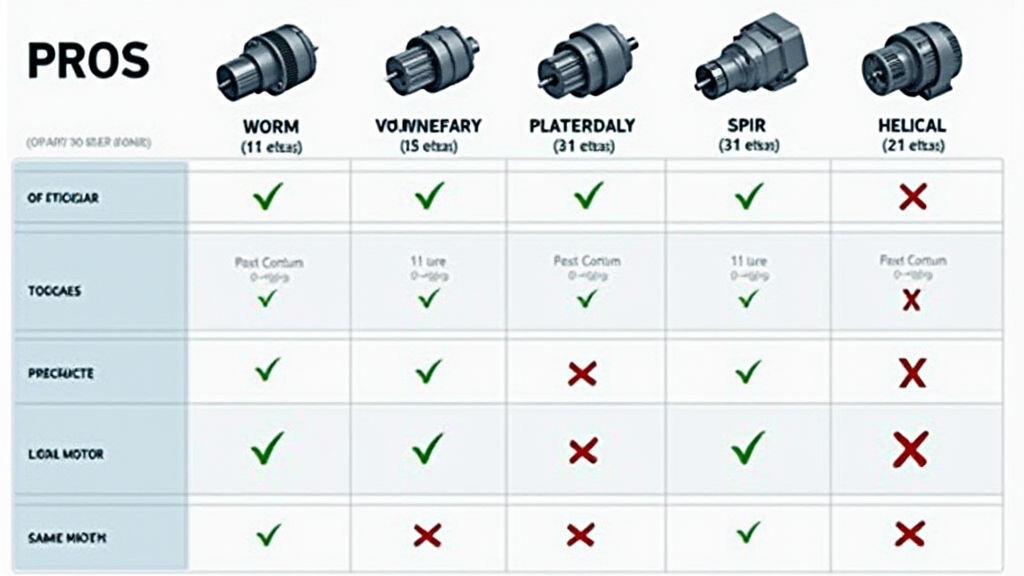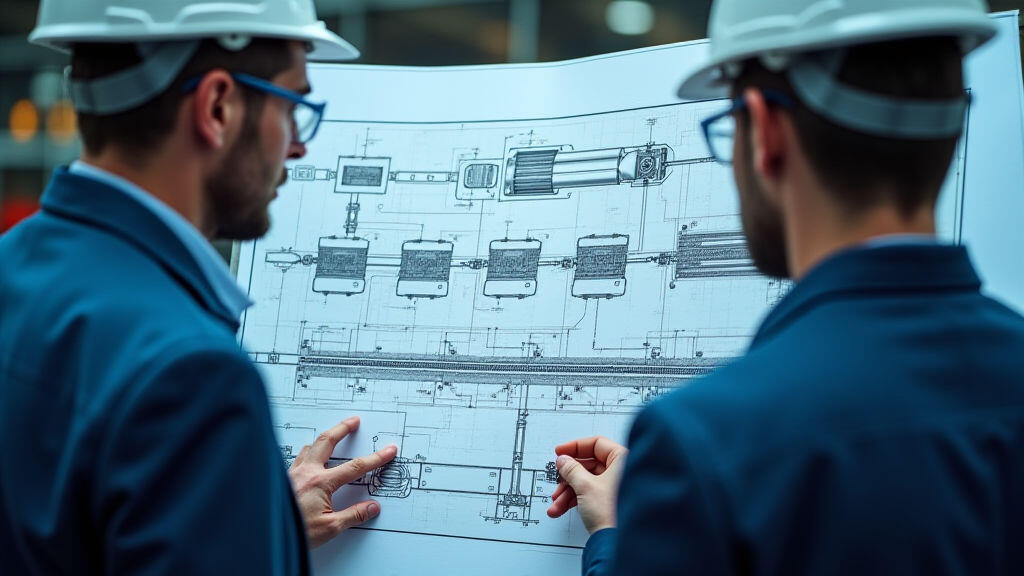A Practical Guide: Experience Sharing on Gear Motor Model Selection in the Automated Production Line Field
The relentless march of Industry 4.0 and the increasing demand for flexible, efficient, and high-precision automated production lines have placed significant pressure on component selection. At the heart of many automated systems lies the gear motor, a crucial element responsible for translating rotational motion into controlled and precise movements. Choosing the right gear motor is no longer a simple task; it requires a thorough understanding of application requirements, performance characteristics, and emerging technological trends. This article shares practical experience and insights on gear motor model selection within the automated production line field, offering a guide for engineers and decision-makers.
The Evolving Landscape of Automated Production Lines
Modern automated production lines are characterized by speed, accuracy, and adaptable workflows. They are increasingly incorporating artificial intelligence (AI) and machine learning (ML) for predictive maintenance, real-time optimization, and autonomous decision-making. This trend directly impacts gear motor selection. For example, the rise of collaborative robots (cobots) necessitates gear motors with precise control and safety features. Furthermore, the growing emphasis on energy efficiency aligns with the adoption of motors incorporating advanced materials and optimized designs. Current global supply chain challenges (a hot topic) have also highlighted the importance of sourcing reliable and readily available components like gear motors. Manufacturers are now prioritizing strategic partnerships and diversifying suppliers to mitigate potential disruptions.
Understanding Application Requirements: A Foundation for Selection
Before diving into specific models, a clear understanding of the application requirements is paramount. Key parameters to consider include:
- Torque Requirements: This is arguably the most critical factor. Accurately calculating the required torque, considering starting torque, continuous torque, and peak torque, is essential to prevent motor overload and ensure system reliability. Overestimation leads to unnecessary cost; underestimation results in performance issues.
- Speed Requirements: The desired rotational speed of the output shaft dictates the gear ratio and motor type. High-speed applications often benefit from smaller gear motors with high RPM, while low-speed, high-torque applications require larger gear motors with lower RPM.
- Accuracy and Precision: Applications requiring precise positioning, such as robotics or semiconductor manufacturing, demand high-accuracy gear motors with minimal backlash. Consider models with precision gears (e.g., planetary gearboxes) and advanced control systems.
- Duty Cycle: The frequency and duration of operation impact motor selection. Continuous duty cycles require motors with robust thermal management and extended lifespan. Intermittent duty cycles allow for more flexibility.
- Environmental Conditions: Temperature, humidity, dust, and vibration can significantly affect motor performance and longevity. Choose models rated for the specific environmental conditions of the production line.
- Space Constraints: In compact automated systems, physical dimensions are a major concern. Miniaturized gear motor designs are available to accommodate space limitations.
- Control System Compatibility: Ensure the gear motor is compatible with the existing control system (PLC, servo drive, etc.) in terms of communication protocols and voltage requirements.
Gear Motor Types: A Comparative Analysis
Several types of gear motors are available, each with its own advantages and disadvantages. Here's a brief overview:
- Worm Gear Motors: Known for their high gear ratios, compact size, and self-locking capabilities (preventing back-driving). Ideal for applications requiring precise positioning and holding torque.
- Planetary Gear Motors: Offer high torque density, efficiency and compact design. They're often preferred for applications demanding high performance in limited space, such as robotics and industrial automation.
- Spur Gear Motors: Suitable for applications requiring high speed and efficiency at moderate torque levels. However, they typically have lower gear ratios compared to worm or planetary gear motors.
- Helical Gear Motors: Offer smoother operation and higher efficiency than spur gear motors, especially at higher torque levels. They are often used in applications requiring quiet operation.

The materials used in gear motor construction significantly impact their performance and lifespan.
- Gear Materials: Steel gears are the most common, offering high strength and durability. However, specialized materials like bronze or plastic gears can be used for applications requiring quieter operation or reduced friction.
- Shaft Materials: High-strength steel shafts are typically used to handle the torque load.
- Housing Materials: Aluminum or cast iron housings provide structural support and protection from environmental factors.
- Lubrication: Proper lubrication is crucial for reducing friction, minimizing wear, and extending motor lifespan. Consider using specialized lubricants designed for the specific application and operating conditions.
Modern gear motors are incorporating advancements like:
- High-Efficiency Gear Designs: Optimizing gear tooth geometry to minimize energy losses.
- Advanced Bearing Technologies: Using ceramic bearings or magnetic bearings for reduced friction and improved lifespan.
- Integrated Sensors: Incorporating encoders or resolvers for precise position feedback.
MES-Drive is a leading provider of high-performance gear motors for the automated production line field. They offer a comprehensive range of gear motor models, from compact worm gear motors to high-torque planetary gear motors, catering to diverse application needs. MES-Drive's gear motors are known for their reliability, efficiency, and precision. Their commitment to innovation ensures they are constantly incorporating the latest technological advancements into their products. MES-Drive also provides extensive technical support and customized solutions to meet specific customer requirements. They are actively investing in research and development to integrate AI-powered predictive maintenance capabilities into their gear motors, further enhancing their value proposition. This aligns directly with the need for proactive maintenance highlighted by recent supply chain disruptions.
A Practical Selection Process: Steps to Success
- Define Application Requirements: Thoroughly analyze the torque, speed, accuracy, duty cycle, and environmental requirements.
- Identify Potential Gear Motor Types: Based on the application requirements, narrow down the list to suitable gear motor types.
- Evaluate Different Models: Compare the specifications of different models, considering performance characteristics, efficiency, and cost.
- Conduct Testing and Validation: Test the selected gear motor in a simulated or actual production environment to ensure it meets performance requirements.
- Consult with Experts: Seek guidance from gear motor manufacturers or automation specialists to ensure optimal selection.
- Consider Total Cost of Ownership: Evaluate not just the initial purchase price, but also factors like maintenance, energy consumption, and expected lifespan.

Conclusion: Gear Motors Driving the Future of Automation
Selecting the right gear motor is a critical decision in the design and operation of automated production lines. The trends of Industry 4.0, including AI-driven optimization and a focus on energy efficiency, are driving demand for more precise, reliable, and adaptable gear motors. The increasing importance of supply chain resilience underscores the need for reliable vendors like MES-Drive. By understanding application requirements, evaluating different gear motor types, and considering material selection and performance optimization, engineers can ensure optimal performance and longevity of their automated systems. As AI and machine learning continue to evolve, we can expect gear motors to become even more intelligent and capable, further enhancing the efficiency and effectiveness of automated production processes. The future of automation hinges on component reliability, and gear motors will continue to be a key driver of progress.



Leave A Reply
Your email address will not be published. Required fiels are marked